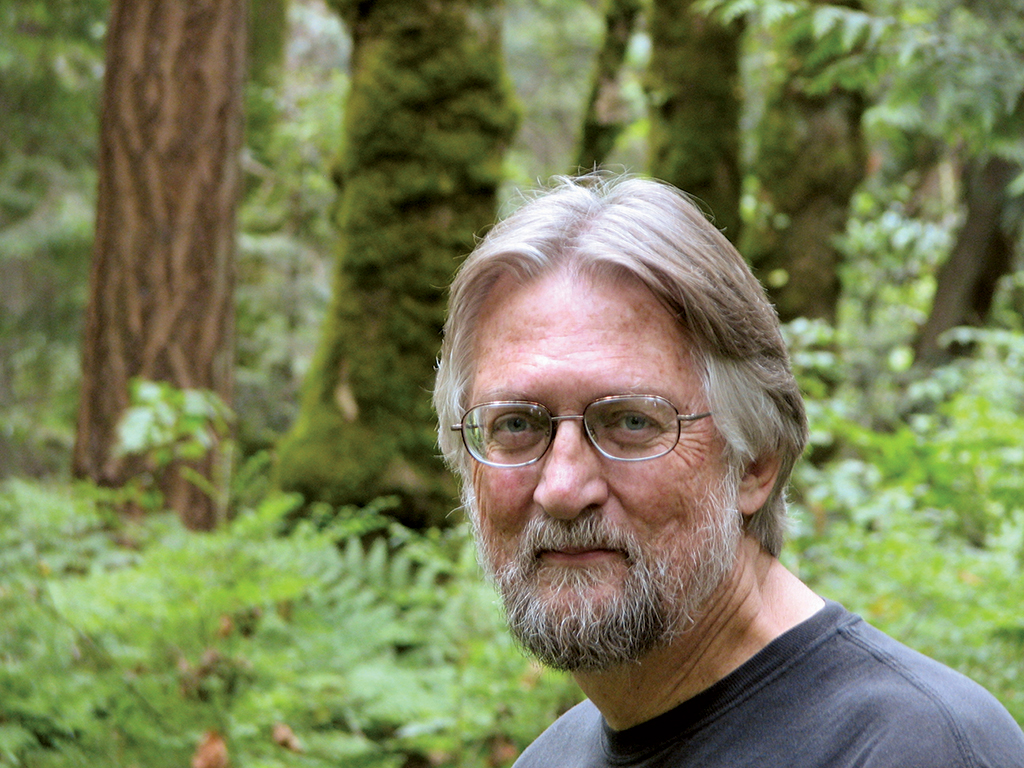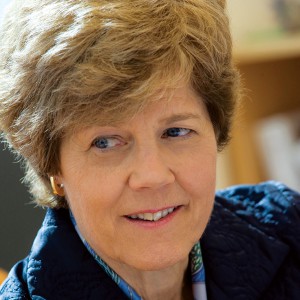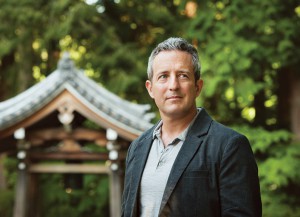This fall, Mind & Life held its International Symposium for Contemplative Studies—the biannual “summit” in the field. Over four days in Boston, the Institute welcomed seven exciting keynotes, including the Dalai Lama; featured more than 35 master lecturers; and presented the work of hundreds of scientists, scholars, and contemplatives. This convergence of minds and research offered insights into the fields of neuroscience, the humanities, clinical science, philosophy, psychology, ethics, physics, economics, medicine, and more. We asked four of our speakers a single question about the current state of the field.
Al Kaszniak
University of Arizona
[intense_lead]What in your opinion, is the most significant, or meaningful, breakthrough in contemplative science over the past 30 years?[/intense_lead]

I think that it is fair to say that we are presently in the “golden age” of contemplative science. Comparing the first to the second five years of this century, there has been a more than 300 percent increase in basic and clinical contemplative science publications. Given this explosion of published research, it is very difficult to single out any particular discovery as the most significant or meaningful breakthrough.
However, taking a step back and trying to see the forest rather than just the many trees, it seems clear to me that the two most important meta-trends in contemplative science have been: (1) the fruition of an approach that truly brings first-, second-, and third-person perspectives into collaborative interaction; and (2) the real beginnings of the sort of “neurophenomenology” that Mind & Life Institute cofounder Francisco Varela had envisioned.
The first meta-trend is embodied by research teams in which highly experienced contemplative practitioners and teachers (“first-person” observers) are active co-investigators with scientists (“third-person” observers) and those humanities scholars (“second-person” observers/translators/systematizers) who study contemplative traditions. The transformative contribution of this trend is the great leap in sophistication of the scientific research questions that are being asked and empirically addressed. In many ways, for the first time there are now scientific studies that are beginning to capture with fidelity contemplative traditions as they are actually practiced in both historical and contemporary contexts.
The second meta-trend of neurophenomenological research is exemplified by scientific studies in which highly experienced meditation practitioners, representing different practice traditions, serve as research participants instructed and trained to make discerning observations of their mental processes while various brain and other bodily physiological measures are taken. The transformative contribution of this trend is that questions can be asked regarding human mental experience and its biological correlates that simply cannot be addressed by studying research participants who do not have the stability of attention or accuracy of perceptual discernment that research has shown to be characteristic of long-term meditation practitioners. The promise this holds for the cognitive, affective, and neurosciences is one of more reliable and finer-grained reports of lived mental experience that can then be correlated with various biological observations. The resultant sophistication of such an approach to “mapping the mind” has the potential to radically shift and advance our foundational understanding of human nature.
Both of these meta-trends are amply represented in the keynote talks, master lectures, and submitted presentations and posters to be presented at the 2014 International Symposium for Contemplative Studies.
Tania Singer
Max Planck Institute
[intense_lead]What in your view is the big breakthrough you most want to see emerge in the next 30 years in contemplative studies?[/intense_lead]

In the last decades, the social sciences have witnessed an explosion of peer-reviewed scientific papers from diverse fields such as psychology, neuroscience, and medicine focusing on the investigation of concepts such as mindfulness, empathy, or compassion. This research reflects the emerging field of contemplative science that aims at unifying wisdom from contemplative traditions with empirical Western scientific methods—that is, to bring together first- and third-person methods. Although this increasing interest in contemplative science is very promising, this field is still in its “kinder shoes” and much needs to be done in order for it to develop into a mature discipline that is fully unfolding its potential impact for society.
What is needed in the future? On the short term, more sophisticated methods for the reliable assessment of complex first-person subjective data and their integration with established objective measurements of brain, health, and body. The creation of the discipline of “neurophenomenology” is a first step in the right direction. This could help rehabilitate the integration of knowledge gained from interoception as a serious method into Western empirical sciences. Second, although recently several research centers have successfully developed several secular mental training programs to promote wholesome qualities such as mindfulness, emotion-regulation, or compassion, these programs have usually not been longer than eight to 12 weeks, and associated plasticity research has often lacked an active control group ultimately needed to test for specific effects of different mental training practices, as well as long-term effects on subjective well-being, brain plasticity, health, and behavior.
On the longer term, research efforts in contemplative science need to be translated into tools and new models that can serve society in a broader sense. For example, mental training programs should be translated into curricula that can be taught to children of different ages in different countries. These programs should optimally be scientifically validated first to assure that their modification is also beneficial to schools and educational settings. Such a procedure would be similar to what is already a requirement in translational medicine and would suggest the creation of a new subfield called “translational psychology” or “translational contemplative sciences.” Furthermore, the bridge between contemplative sciences and economics is still very thin and fragile. This is astonishing given the huge impact our globalized cross-national economic systems have on society. Integrating new findings from contemplative sciences into economic models and policies could help replace old notions of a selfish and single-minded “homo economicus” and lead to new models of a more “caring economy” that promotes the well-being of all global citizens and the environment they are living in for future generations to come.
Diana Chapman Walsh
President Emerita, Wellesley College
[intense_lead]What are the implications for a Symposium like this that brings together individuals who might not ordinarily intersect?[/intense_lead]

Allow me to flash back for a moment: to April, 2012, in Denver, Colorado. This was the first Symposium the Mind & Life Institute held. For 700 people. I had agreed to speak with a vague impression of the world into which I had been invited.
Two years later, I’m writing this from Boston, Massachusetts, where we are six months away from the second Symposium— for 2,000 people.
That may say it all. About this world, this field, Mind & Life, and the growing aspirations in all of us for it.
Really, the Denver meeting was a moment of convergence—a kind of sangha of scientists exploring the human mind from a range of disciplines and perspectives, asking how training the mind through contemplative practice reduces suffering and enhances well-being, happiness, and social harmony in an era marked by nothing if not disorienting change.
What the Denver meeting affirmed for me, a new “convert,” was the value of encounters among those whose work intersects in the emerging contemplative fields. It has been said that any social system is strengthened by denser and more durable connections. Denver was a junction for connecting minds and hearts. And as important as the fact that we came together was how we did, with open-heartedness and a sense of playfulness, mutual appreciation, and joy in shared learning.
These are the qualities embodied by the Dalai Lama, who will be with us six months from now. I have learned much from His Holiness since that Denver meeting. I have witnessed him hosting dialogues between the two great intellectual traditions: the first-person, phenomenological perspective of the world’s contemplative traditions (with their two millennia of serious scholarship), and the third-person, objectivist perspective of Western science (with its increasingly refined methods and tools for probing the mind).
In January of 2013, in South India, I watched His Holiness demonstrate to thousands of Tibetan monastics how they can open themselves to the other (“the new materialists” he called his MLI colleagues with a chuckle), expecting and preparing to be transformed by the encounter, and yet confident at the same time that it won’t distort or extinguish what distinguishes them and the gifts they have to offer. To use his words, I saw how this kind of “warm-hearted” exchange across difference can sharpen and deepen our understanding (rather than dilute or diminish it).
These are the implications I think of most. Of course, there are the new books and studies since 2012, the new findings and insights, the new collaborations among long-established organizations, groups, multiple generations. But when a Symposium like this happens, what we can honestly report is so much bigger: We can say that scientific dialogues between Western scientists and the Dalai Lama advance an important scientific field, but also an ethical foundation of new norms and possibilities.
If we are mindful, vigilant, and respectful, conscious of how little we know, how little we can know, open to our uncertainties and yet unrelenting in our pursuit of solid evidence, then we may create receptive spaces in which to bridge our disagreements and hold our tensions in the service of mutual discernment and enlightenment. If we can bring profound listening and deep presence to all our encounters, then we may hope to unleash the energy in the differences among us and channel it toward collective insights as yet unimaginable.
If we can sustain these disciplines, then Denver, Boston, South India—place does not matter. Because what we are in fact doing is sculpting a scientific field unlike any other, one that unites students of the mind in a warm and welcoming community around the world and dedicated to addressing the most serious immediate problems we humans confront—always in the wider frame of what makes life worth living.
Edward Slingerland
University of British Columbia
[intense_lead]What are the rewards and opportunities when science engages the contemplative traditions?[/intense_lead]

So-called “first generation” cognitive science was very much influenced by rationalist, disembodied models inherited from the past few hundred years of Western philosophy. According to thinkers like Descartes or Kant, human cognition is primarily concerned with abstract, amodal concepts, which are manipulated by conscious algorithms and then correlated in some way with sets of objects in the world. This view shaped the early cognitive scientific models that focused on “brains in a vat,” or cognition as platform-independent information processing.
The nice thing about scientists is that, although they are often saddled with incorrect or misleading initial assumptions, eventually an accumulation of empirical evidence can force them to change their views. Cognitive scientists fairly quickly began to realize that the disembodied,
representation-only model of cognition didn’t make much evolutionary or neuroscientific sense, and they began casting around for other models. Interestingly, one source of inspiration they alighted upon was Asian thought, particularly Asian contemplative traditions. These traditions never went down the weird rabbit hole of disembodied thought and have always been about using embodied techniques to train the body, the emotions, and the imagination. In many respects, their views of the embodied mind anticipated the relatively recent embodied or enactive movement in cognitive science.
The “embodied cognition” movement is now firmly entrenched in contemporary cognitive science. Since a few thousand years of very bright people focusing on a problem or set of problems can often produce interesting and useful results, cognitive scientists are becoming increasingly aware that the techniques for self-cultivation, meditation, mindfulness, imagination extension, and ritual practice developed in Asian contemplative traditions have much to teach us about the integrated body-mind, the inextricable connection between emotion and reason, and the ways in which cultural training interacts with the embodied mind. Cognitive science stands to gain many powerful and unexpected insights, and the contemplative traditions themselves can only be enriched by being regrounded in a contemporary naturalistic framework. This sort of conversation strikes me as one of the more promising and exciting ways forward in the various fields of which I’m a part.
About the Scholars

